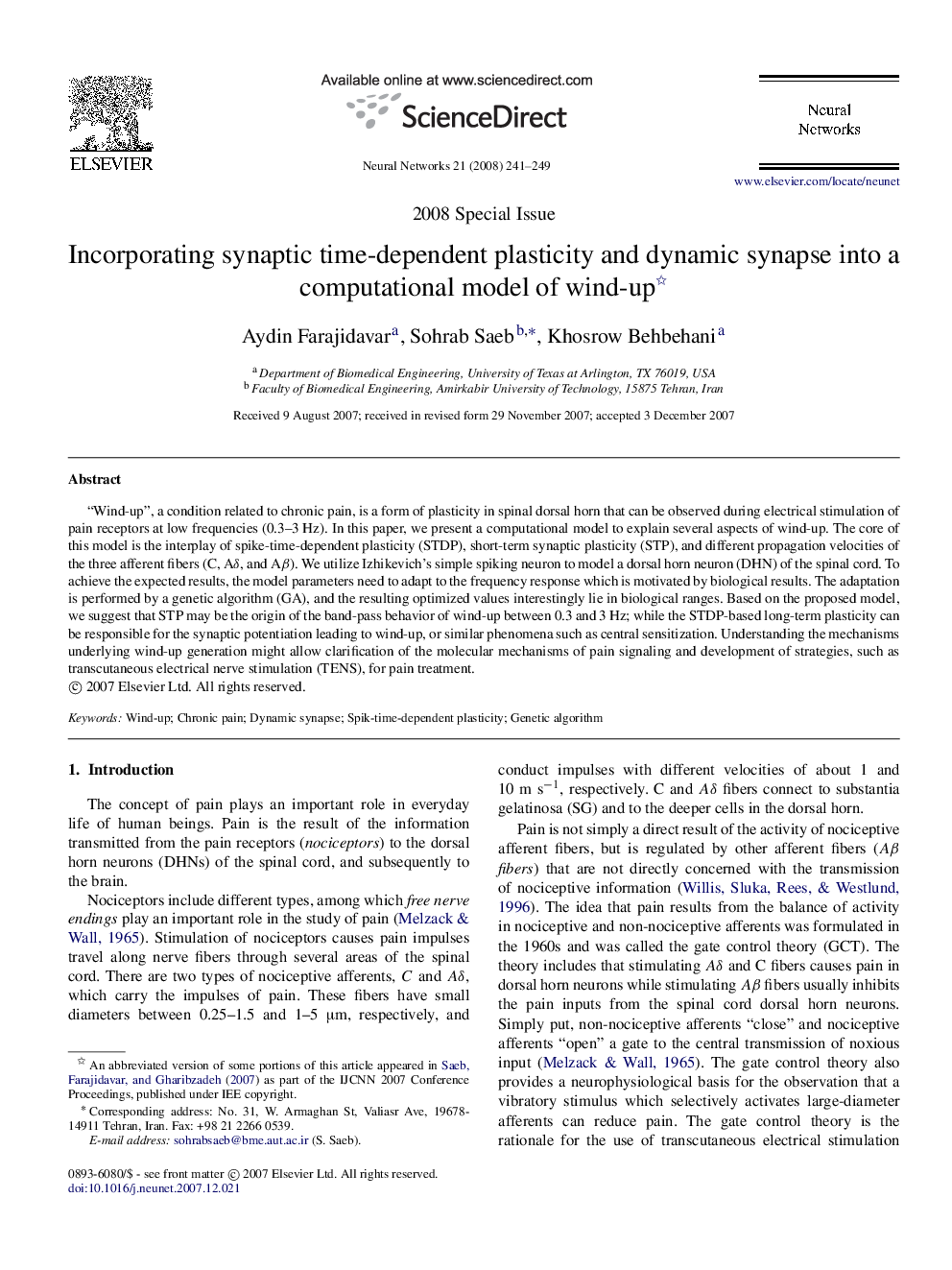| Article ID | Journal | Published Year | Pages | File Type |
|---|---|---|---|---|
| 404666 | Neural Networks | 2008 | 9 Pages |
“Wind-up”, a condition related to chronic pain, is a form of plasticity in spinal dorsal horn that can be observed during electrical stimulation of pain receptors at low frequencies (0.3–3 Hz). In this paper, we present a computational model to explain several aspects of wind-up. The core of this model is the interplay of spike-time-dependent plasticity (STDP), short-term synaptic plasticity (STP), and different propagation velocities of the three afferent fibers (C, Aδ, and Aβ). We utilize Izhikevich’s simple spiking neuron to model a dorsal horn neuron (DHN) of the spinal cord. To achieve the expected results, the model parameters need to adapt to the frequency response which is motivated by biological results. The adaptation is performed by a genetic algorithm (GA), and the resulting optimized values interestingly lie in biological ranges. Based on the proposed model, we suggest that STP may be the origin of the band-pass behavior of wind-up between 0.3 and 3 Hz; while the STDP-based long-term plasticity can be responsible for the synaptic potentiation leading to wind-up, or similar phenomena such as central sensitization. Understanding the mechanisms underlying wind-up generation might allow clarification of the molecular mechanisms of pain signaling and development of strategies, such as transcutaneous electrical nerve stimulation (TENS), for pain treatment.
